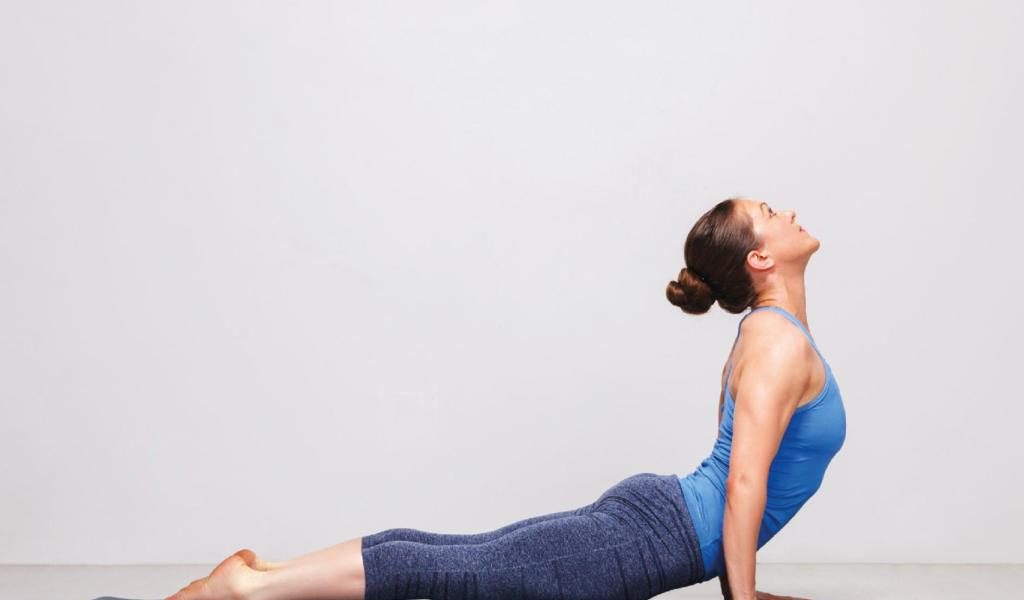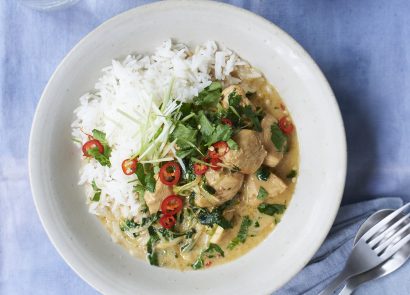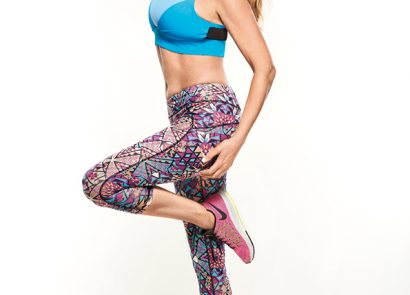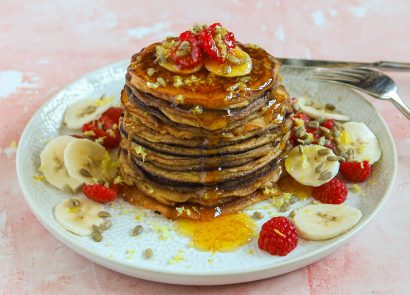Flexible foods for your 40s
Having trouble touching your toes? Lubrication is the key – but we’re not talking about Vaseline. Instead, think about consuming more foods and drinks that will improve the elasticity of your muscles and joints.
Oily fish
“Salmon has anti-inflammatory properties and is a good source of essential omega 3, including DHA and EPA long chain fatty acids, which have been shown to preserve muscle mass,” says qualified nutritionist Emma Scott (nutrilife.uk.com). “Try to eat two portions of oily fish per week, with one portion being 140g.”
Rainbow veg
As muscles are made up of around 70 percent water, good hydration – whether from the tap or from water-rich vegetables and fruits – is essential. What’s more, while many of us add a dollop of collagen to our beauty regime, brightly coloured foods such as bell peppers, tomatoes and broccoli also allows us to boost collagen via our diet. Brightly coloured fruit and vegetables contain high levels of vitamin C, which helps with collagen production. This can rebuild connective tissues, strengthen muscles and reduce free radical damage created from oxidative stress as a result of exercising.
Meat and eggs
Not only is protein a building block for body tissue and muscle mass, but many foods rich in protein also contain sulphur, which is a musthave mineral for healing connective tissue. Found naturally in meat, eggs and salmon, as well as many pungent vegetables such as onion, garlic and Brussels sprouts, it can also be taken as a supplement in the form of methylsulfonylmethane (MSM). Sulphur deficiency can lead to pain and inflammation in the muscles as well as risk skeletal disorders.
Flexible fitness for your 40s
Working out and maintaining a healthy lifestyle as you age is vital because it can help with symptoms of, or prevent the onset of, osteoporosis through protecting against bone loss.
For over 40s, strength (resistance exercises), flexibility (yoga and posture exercises) and mobility (stretching) are the three key areas to focus on. Here’s some exercises to try:
Bike or walk to work
Studies have shown if you add interval training (alternating periods of high and low intensity with rest breaks) to your daily hike it can have a big impact on your flexibility. “A study by Oregon State University in 2017 looked into the impact of exercise on muscle mass in an ageing population at a cellular level,” says Scott. “It concluded high intensity interval training in aerobic exercise, such as biking and walking, caused cells to make more protein for their energy-producing mitochondria and protein-building ribosomes, effectively stopping ageing at a cellular level.”
Whole spine mobilisation
“With increased smartphone usage, exercises that safely and gently mobilise neck, mid-back, lower back and gluteal muscles are really important,” says celebrity osteopath Anisha Joshi, clinic director at thewoodsideclinic.co.uk. “Child pose in yoga is a great position to do daily, holding for five breaths, or lie on your back and gently pull your knee into your chest with your hands. Hold for a few seconds and alternate the legs. Do this 10 times per leg, every day. For your neck, try interlacing your fingers behind your neck and gently drawing a large figure of eight with your elbows.”
Bicep curl squat
Applying tension to the muscle fibres via strength training exercises (using weights, resistance bands or body weight) twice a week has been shown to activate growth hormones and increase muscle strength and flexibility. A study in The American Journal of Clinical Nutrition, performed on postmenopausal women aged 54 plus, reported that it could also help minimise sarcopenia (muscle loss). “Squatting exercises are fantastic for increasing hip flexibility and strengthening the leg muscles, while bicep curls maintain and increase arm strength. Opt for 10 to 12 reps,” recommends personal trainer Kira Mahal from motivatept.co.uk. “These exercises will make performing everyday tasks, such as climbing stairs, far easier as you get older, as well as reducing the risk of injury from falling.”
Flexible foods for your 50s
For the menopause and beyond, protein is your pal. “Ensuring you get adequate protein is vital to sustain and build muscle mass, support tendons, ligaments and connective tissue,” says Scott. “Insufficient levels result in the body breaking down muscle fibres. Over the age of 50, we are also at higher risk of developing a degenerative muscle condition called sarcopenia, so it’s recommended we get 25-30g of high quality protein per meal to prevent this.”
Eggs
“Eggs are a good source of quality protein as they contain all the nine essential amino acids, including leucine, which studies show helps to preserve muscle mass,” says Scott. “They also contain vitamin D in the yolk, which has been identified as a potential nutrient to improve muscle quality as we age.”
Pineapple
“This is the only natural food source of bromelain, an enzyme that helps break down protein from food and aids digestion,” says Scott. “Studies show it has potent antiinflammatory properties that can reduce swelling and promote healing of minor muscle injuries.”
Fortified foods
Studies show inadequate dietary levels of vitamin D are associated with lower muscle strength and sarcopenia – so stock up on fortified cereals and milk products with added vitamin D. “Vitamin D plays a vital role in the absorption of calcium, which is needed by the muscles to help them contract,” affirms Scott. “Both these nutrients play a critical role in maintaining bone mass, which is directly related to our mobility.”
Flexible fitness for your 50s
While we might think that our flexibility decreases with age, in fact, it remains the same throughout our lives – but only if we keep training. Try the following 50 plus fit tricks.
Dancing and swimming
“Moderate intensity aerobic exercises are a better approach to sustainable long-term exercise,” says Scott. “A study by the Cancer Research Centre in Seattle concluded that five days of low intensity aerobic exercise per week improved muscle mass in women over 50 years of age. Try to increase the duration from 15 minutes per day to 45 minutes per day over a 12 month period to help prevent injury and enable gradual muscle adaptation.”
Hamstring stretches
“The prevalence of lower back pain increases from 50 onwards but, by stretching your hamstrings, you can reduce the pressure on your pelvis and lower back,” says Joshi. “Try a slow roll-down from standing or sitting and reach for your toes. If sitting, reach for each individual leg five times each side. Alternatively, lie on the floor and gently bring both knees to your chest and hold for a few seconds. Do this two or three times per day. Bringing both knees to your chest provides more stability than doing it with a single leg.”
Pilates
“Cat/dog stretches, side bends and spinal twists all aid flexibility. “Incorporating strength training such as Pilates provides a cross-training mix, which is lower impact and reduces inflammation and risk of injury,” says Scott. “At the same time, it helps improve posture and balance and boosts the flexibility and strength of the muscles, tendons, bones and ligaments.” Try practising the saw exercise by sitting up straight on your sit bones and extending your legs wide. Stretch your arms out either side and, as you inhale, twist to the right. As you exhale, touch your little finger to the toe of the opposite foot. Inhale back to the centre and repeat on the other side. Do three sets on each side.






















